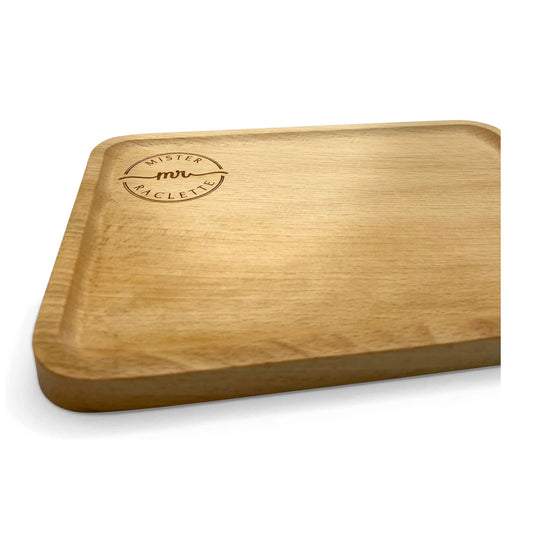Who invented the raclette oven?
Introduction
The raclette, famous for its friendliness and simplicity, is a traditional Swiss dish popular all over the world. At the heart of this culinary tradition is the raclette oven, a device that has undergone remarkable evolution since its invention. This article traces the history of the raclette oven, from its modest origins to its modern form, highlighting how Valentin David revolutionized the way of tasting this delicious delicacy.
The origins of the raclette
Historically, the raclette was prepared for a wood fire. The cheese was placed horizontally on a stone or wooden board, the surface to melt directed towards the fire. This method, while primitive, set the building block for what would become an adoring culinary experience. The roots of this tradition go back centuries, in the Swiss Alps, where shepherds warmed around the fire tasting melted cheese.
The innovation of Valentin David, the raclette oven

In 1957, Valentin David revolutionized the concept of the raclette oven by introducing the first articulated model capable of melting several half-pieces of cheese simultaneously. This invention not only improved the efficiency of cheese fusion but also transformed raclette into a social and shared experience. Valentin David, a visionary of his time, knew how to perceive the potential of this traditional dish and transform it into a modern dining experience.

The evolution of the raclette oven
From artisan beginnings to the first patents
The first raclette ovens were craft creations, made in the Valais Central, in Chalais. After the first patents were filed in the late 1940 s, these devices began to evolve, integrating electrical resistors and then infrared gas burners for better heating efficiency. These early innovations have set the foundations for the modern raclette oven, combining tradition and technology.
The appearance of electric raclette ovens
Between 1955 and 1965, a major advance marked the raclette ovens. Indeed, electrical devices have appeared. These models incorporated quartz heating resistors. They also included innovative accessories. For example, cheese carriers and height adjustment systems. Thus, they allowed a more precise control of the melting of the cheese. In addition, they significantly improved the user experience.
The Impact of Innovation on Gonomy
The invention and evolution of raclette ovens have had a significant impact on food. By making the raclette more accessible and easy to prepare, these innovations have allowed the dish to gain popularity far beyond Swiss borders. The Raclette Has become a festive dish, ideal for social meetings, thanks to the ease of use of modern ovens. This evolution has made it possible to transform a traditional dish into a modern and accessible culinary experience.
The raclette today: a global tradition
Today, the raclette is celebrated all over the world. Indeed, modern raclette ovens play a key role in this celebration. They vary from family table models to professional versions for restaurants. So the raclette continues to bring people together for warm times. In addition, the accessibility and ease of use of modern ovens had a noticeable impact. They made the raclette popular for various occasions. That includes everything from intimate dinners to big social events.
Technological advances in raclette kilns have been remarkable. Over the years, many improvements have been made. From the first electric models to the infrared gas versions, each innovation offered more efficiency. It also facilitated the use. Manufacturers have added innovative features. For example, adjustable temperature control, improved heating elements and ergonomic designs. These improvements make the preparation of the raclette faster, safer and more enjoyable.
Raclette: from tradition to global trend
The popularisation of raclette ovens has had a great impact. This traditional Swiss dish has become a global culinary trend. First in Europe, then in North America and Asia. Thus, the raclette has conquered tables around the world. It has become a symbol of sharing and conviviality. In addition, restaurants specializing in raclette bear witness to this success. The same goes for culinary events dedicated to this dish. They reflect his international success. Anedotes Historical raclette
The raclette has a rich history, peppered with anecdotes and interesting facts. For example, the raclette tradition dates back to Swiss shepherds who used cheese to supplement their meal in the mountains. In time, this simple dish has become an essential part of festivities and social gatherings, symbolizing the comfort and warmth of the community.
The raclette oven in modern culture
The raclette oven occupies a special place in modern culture. It is not only a culinary tool but also a central element of social meetings, providing an interactive and entertaining experience. Many homes and restaurants continue to innovate by offering raclette variants, experimenting with different cheeses and accompaniments to enrich this tradition.
The durability and eco-design of raclette ovens
In a context of ecological awareness, manufacturers of raclette ovens are increasingly turning to sustainable practices. The use of environmentally responsible materials, the improvement of energy efficiency and the durability of the devices are aspects increasingly taken into account in the design of modern raclette ovens.
Conclusion
In conclusion, the raclette oven is much more than just a kitchen appliance; it is a symbol of tradition, innovation and friendliness. From Valentin David's ingenuity to the rise of ecological models, the raclette oven continues to reinvent itself, while remaining faithful to the spirit of sharing and warmth that has characterized raclette since its origins.









